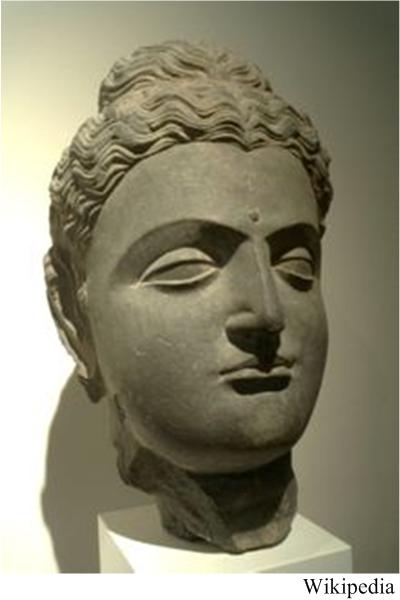 In my post, “Causality, Chance, and Connections,” I have already alluded to one of the biggest mysterious connections that has bedeviled me over the years, namely, the brief suggestion I found in an art book over 50 years ago in the mid-1960s that the human images of Buddha that appeared in statues some four to five hundred years after his life came from the influence of Greek settlers left by Alexander the Great around 300 BC in the Gandhara region of then northwest India (now Pakistan).
In my post, “Causality, Chance, and Connections,” I have already alluded to one of the biggest mysterious connections that has bedeviled me over the years, namely, the brief suggestion I found in an art book over 50 years ago in the mid-1960s that the human images of Buddha that appeared in statues some four to five hundred years after his life came from the influence of Greek settlers left by Alexander the Great around 300 BC in the Gandhara region of then northwest India (now Pakistan).
I spent decades trying to verify this story. For some time I have wanted to write an article about what I found. But it was such a vast and nebulous tale, that I was reluctant to hazard my limited view of the matter. Nevertheless, I finally could not resist, so here is my sketch of the great Greek Buddha mystery.
See the Greek-Indian Connection
(Update 1/8/2024) Buddha in Egypt
It looks like new evidence of ancient links between India and the Mediterranean world are being discovered all the time. This article about a statue of Buddha found in Egypt dating to the early Roman period is fascinating. See Buddha in Egypt.
This article reawakens a question I have had for years but never had corroborated: why was monasticism claimed to have originated in Egypt, in particular the Sinai, around the first century CE, when it clearly existed in India with Theravada Buddhism that arose in the early days of Buddhism around 500 BCE? Now this latest discovery in Egypt indicates the Egyptians were well aware of Indian religions and in particular Theravada Buddhism, which was dominant in Sri Lanka. In fact, Wikipedia suggests that Sri Lanka was a major link to the ancient Egyptian port city Berenike where the Buddha statue was found. Tis a puzzle.
